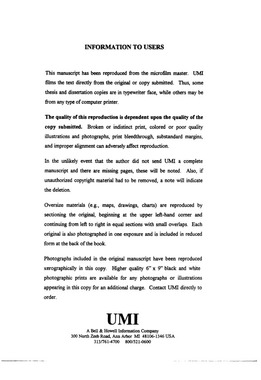| dc.contributor.advisor | Long, Huey, | en_US |
| dc.contributor.author | Jefferies, Chris L. | en_US |
| dc.date.accessioned | 2013-08-16T12:29:49Z | |
| dc.date.available | 2013-08-16T12:29:49Z | |
| dc.date.issued | 1997 | en_US |
| dc.identifier.uri | https://hdl.handle.net/11244/5517 | |
| dc.description.abstract | Five outsourcing case studies were conducted at four public institutions of higher education in Oklahoma. The cases yielded data on nine outsource decisions. Drawing on three theory-based models that can explain outsourcing--economic-based, management-based, and decision-process dynamics-based--analysis suggests that the institutions outsource (the "why") for two reasons. First, economic-financial benefits are derived as an in-house enterprise is exposed to the market's competitive forces, and contracts are awarded that reduce costs and increase revenues. Second, management benefits are derived from a contractor's ability to increase productivity, increase efficiencies, and provide economies of scale, and from divesting non-core activities. Analysis also suggests that the institutions decide to outsource (the "how") as a result of the institution's decision process dynamics: the bureaucratic, the collegial, the political process dynamics. A more complete decision model thus accommodates an institution's desire to gain both economic-financial and management-related benefits, and includes all three decision process dynamics, sequentially or simultaneously, in the decision process. Finally, the study concludes that analysis of reengineering or restructuring is and should be an integral part of outsource decisions. | en_US |
| dc.description.abstract | The use of outsourcing in higher education has grown over the past decade as colleges and universities have sought management mechanisms to reduce operating costs and increase revenues. Current higher education management practice and related literature stress the financial benefits possible from outsourcing, provide case studies suggesting how financial benefits can be realized, and offer analytical matrices to assist decision makers arrive at an outsource decision. In addition, several published surveys list the numbers and types of enterprises outsourced by higher education institutions. Curiously absent in higher education management literature is discussion of non-financial considerations that may affect a decision to outsource. The presence of non-financial considerations may suggest that the economic, financially-oriented model is an incomplete explanation of outsource decisions and a more complete explanation is useful and appropriate for theoretical and practical purposes. This study identifies non-financial considerations affecting outsource decisions in higher education by focusing on how and why higher education institutions outsource and proposes a more complete decision model. | en_US |
| dc.format.extent | vii, 166 leaves ; | en_US |
| dc.subject | Education, Higher Oklahoma. | en_US |
| dc.subject | Education, Administration. | en_US |
| dc.subject | Business Administration, Management. | en_US |
| dc.subject | Education, Higher. | en_US |
| dc.subject | Contracting out. | en_US |
| dc.title | Outsourcing in public higher education in Oklahoma. | en_US |
| dc.type | Thesis | en_US |
| dc.thesis.degree | Ph.D. | en_US |
| dc.thesis.degreeDiscipline | Department of Educational Leadership and Policy Studies | en_US |
| dc.note | Major Professor: Huey Long. | en_US |
| dc.note | Source: Dissertation Abstracts International, Volume: 58-05, Section: A, page: 1519. | en_US |
| ou.identifier | (UMI)AAI9733893 | en_US |
| ou.group | Jeannine Rainbolt College of Education::Department of Educational Leadership and Policy Studies | |
